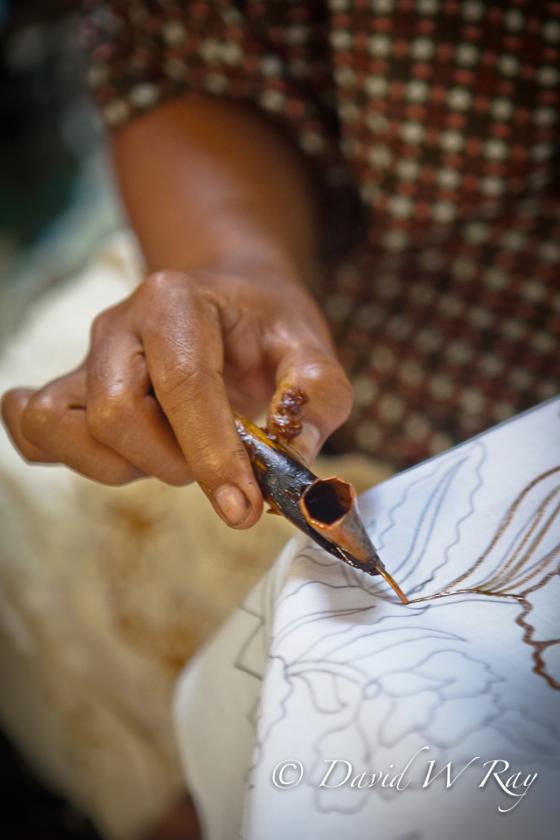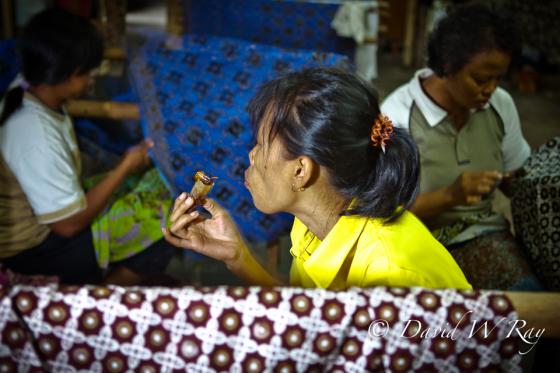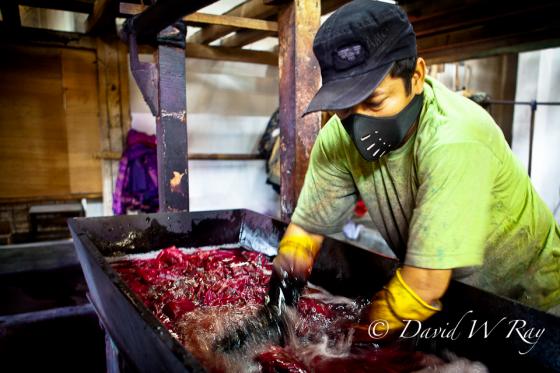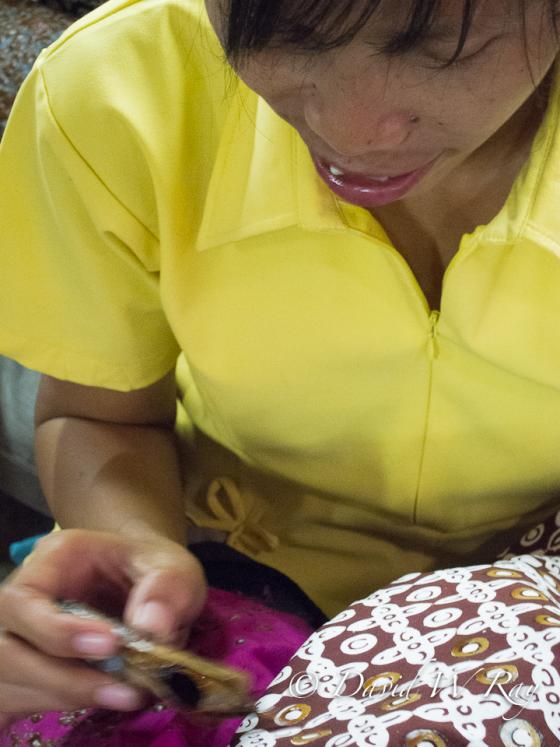Javanese Hand-Drawn Batik Artists of Jogjakarta
Batik is an almost world-wide phenomena, so everyone thinks they know what it is. To most people it’s nothing more than highfalutin tie-dyed fabric. That’s why it’s so hard to get people to appreciate the breathtaking amount of work that goes into Javanese batik.
Americans don't have enough appreciation of this amazing art. I once knew a guy who exported Javanese batik shirts to the US. He found that the Indonesian batik was completely unappreciated by naïve Americans who merely saw them as tropical flowered shirts instead of works of art. I myself have explained the whole amazing hand-drawn batik process to visitors, helped them pick a stunning five-color shirt or blouse, but I could tell they didn't have any real appreciation for the art. Then I'd take them to a Javanese batik factory before the lights came on—their mouths dropping open & then the question—“You don’t mean that this is how that shirt I bought was made, do you?” Batik art appreciation ignites!
No one makes batik like the Javanese do—in detail & finesse they’re unsurpassed, and they have done a great job of passing the art on to their youth. I’ve seen at least three generations of batik makers since I first came to Jogjakarta in 1984. If anything, in recent years Javanese batik has seen a huge revival. Go to any mall in Jakarta & see all the classy batik from traditional Javanese themes that people are wearing. Indonesian batik is alive & well.
If you want to go to the capital of batik, there’s no real question that you must go to Java—specifically Central Java. There’s a long running argument then is it to be found in Solo (Surakarta) or Jogja (Yogyakarta/Jogjakarta). Perhaps I’m partial—but I see it as Jogja.
In Jogja you’ll see young & old Javanese women taking up the canting (CHAN-ting), a liquid pen dipped into hot wax.
She carefully clears the tube with her own breath & then skillfully applies the batik's wax masking to cotton cloth—following a pre-drawn, highly detailed design.
After the first masking is dry, the cloth is immersed in dye & treated with chemicals that set the color.
After the first wax masking is either scrapped off with razors or boiled off, the artists go to work again with a second mask for the next dying. They do this however many times they choose to get the color combinations they desire. My five-colored batik shirts had been masked & dyed five times.

One of the cool things about Java is that you can walk through a poor farming village & see stunning works of art—batik sarongs (correctly pronounced SA-rong), blouses & shirts hung on the line to dry. I’ve actually been guilty of stopping to appreciate the high artistic quality of items hung on a poor neighbor’s clothesline.
No art aficionado ever stopped to ooh & awe at my clothesline—until I got into Javanese batik!
Want to photograph these Javanese hand-drawn batik artists yourself? Check out our Sept. 14-25 Java-Bali Photo Tour & be sure to sign-up for the extension tour to Jogja, Central Java. See more at www.thedigitaltrekker.com/2013/01/east-java-bali-photo-tour/




